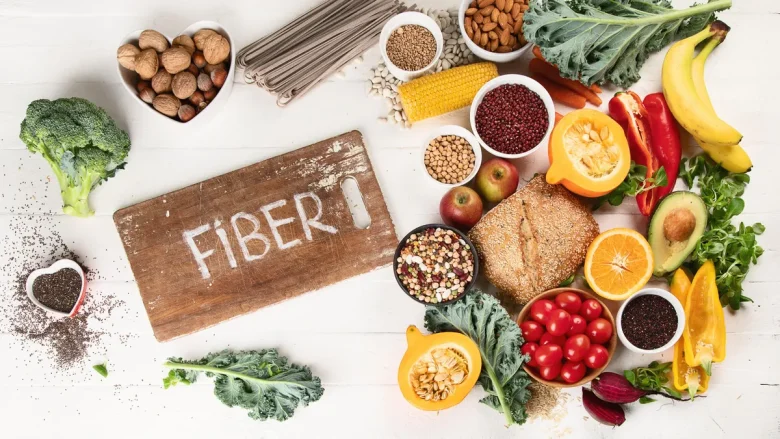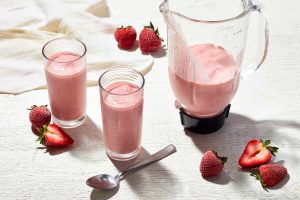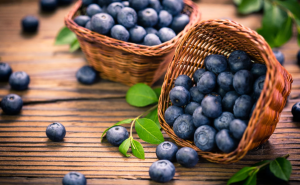No one can stress the significance of the food you eat on your plate in supporting the digestive system. Most of us fall prey to the usual binge on calorie counting or tracking intake of proteins. Little did they know that there is one more critical factor that is often overlooked, fiber. This is one of the most important factors in the dietary fiber and whole grain diet that prevents several digestive disorders. Even this marvelous nutrient has some cons of its own! Of course, one of the most pleasant the methods to increase this intake is the consumption of bran cereals or fruits like bananas, apples or pears.
This workout cannot have anymore fun than this making it fun through the stunning colours of different fruits such as pears, raspberries among many others which are simply used to make boring in between meals interesting but assist the gut in every way possible. Which vegetable has the most amount of fiber? Let’s go the other way and aim for these fruits and get rid of all the misery that they make on the audience.
Requirements of Fruits and vegetables:
Quite controversially fiber is inevitably dismissed as perhaps one of the more tedious and less interesting constituents of the nutrition chart. It assists in the proper activity of the bowels which is essential to keep the internal part of the body that is most commonly altered free from thrombus. This helps in the avoidance of constipation as well as makes any distress in the stomach less distressful. Additionally, it is also beneficial that the fiber contains the ability to absorb swelling and water while passing through the gastrointestinal tract. The size of food is the right size of bulk since it assists the food from the mouth to the anus and within the body to be more efficient.
In addition, also the fibers are a good dosing of the duly processes of digestion, but assist too the friendly bacteria within the intestines. These nasty micros consume soluble fibre, and produce short-chain fatty acids, that are food for the cells in the colon and enhance the wellbeing of the intestines. It has also been found that when one eats a lot of high fiber foods they feel full for a period of time. This is helpful not only during weight control issues but it also aids in reducing excessive eating of snacks at different times of the day.
Spinning and Structuring of Fibre:
Among other divisions, ground fibres are mostly divided in to two types soluble and insoluble fibre. Each has a role to play in ensuring that the digestive tract works in a proper manner.
Soluble fiber is a type of fiber that forms a viscous gel upon absorbing water, this type of fiber is referred to as gel forming fiber. this type of fiber has been shown to constate in less time especially in the movement of food through the gastrointestinal tract and therefore is appropriate in controlling level of sugars and cholesterol in the body. Foods belonging to this category include oats, beans, apples and citrus fruits.
The benefits of insoluble fiber include ensuring that the stool consistency is less viscous and degests quickly through the intestines. This helps to prevent constipation and promotes proper regular bowel movements. Adequate concentrations of insoluble fibers can be found in a number of whole grains, nuts, seeds and vegetables including carrots and celery.
Both types are important in probiotics for gut gut. Well being There is need of all in order help you experience the reasons for reliance on fiberous foods since food taste will be so altered in every meal.
Recommended High-fibre Fruits to Add in Your Everyday Menu:
When it comes to fruits with significant amount of fibre, berries come first. That is the reason why raspberry and blackberry are some of the most beloved fruits by many. One cup is even around 8 grammes of fibre.
Another groovey alternative would be adding pears. A medium-sized pear with skin contains approximately 5–6 grammes of fibre. Snack them or slice and add them to your salads.
Apples are again one of the easily found and used fruits too. Per average per head, the medium-sized apple provides 4 grammes of fibre content, which is better utilised when the peel is also consumed.
Bananas also need to be talked about. Each banana contains around three grammes of fibre, which of course is quite handy as food.
Avocados are one of the richest in this fibre category. It also has the benefit of about 10 grammes of fibre in a cup!! Delicious with any dish and even more nutrient when used as spread on bread and even more so by putting in smoothies.
Significance of Including High-Fibre Fruits in Your Diet Nowadays:
Incorporating high-fibre fruits into your diet is rather beneficial considering the many gains that it will bring with it. They are of great importance in promoting good functioning of the digestive system. From the normal going to bath reasons, fibres are consumed to support the release of bowel contents on a normal level; hence, it also helps in easing the constipation and any other discomforts associated with it. There is also the possibility of body weight reduction with the help of these fruits. Fruits are high in fibre, so they keep you full and they reduce the need for junk food as usual.
In addition, many fruits containing a lot of fibre also have vitamins and anti-oxidants. It can be very useful to defence systems of every individual. Apart from the physical benefits from using those fruits, it can also enhance emotional well-being. Good functioning of the intestines translates to better feelings and even zeal to work. Soluble fruits are very helpful in lowering blood cholesterol levels, which in turn promotes cardiovascular health. What makes healthy food even more healthy is the fact that it is also nice to eat because there are many other non-caloric sugars.
Other Ways in Which You Can Benefit Your Digestive Health:
Improving and maintaining the digestive health presents a major problem that is accompanied by fiber intake only. Water has benefits in helping with digestion as well as constipation. Watch on the amount of water that you consume per day to ensure that it is not less than eight glasses.
Extra weight reduction can also be achieved through regular physical activity too. Such activities helps in the digestive system; hence, the frequent elimination of wastes is encouraged and reduction of water retention.
Eating in a relaxed atmosphere is a simple method of enhancing the quality of your meals. When eating, do so slowly and deliberately in order to savour every bite while improving your eating habits.
Another thing that needs looking into are the probiotics. Good bacteria in the stomach are most likely to be fostered from other food sources such as yoghurt, kefir, and vegetables.
This brings us to the importance of relieving stress, for there is no need to skip this area. Such activities as yoga as well as meditation have the ability to reduce clutter that may contribute negatively to digestive processes. There are several interactions between eating and stress and how all of these aspects play a role in improving digestion. Clean, engineer the stomach through stressful factors.
Conclusion:
Using sufficient proportions of high-fibre fruits in one’s diet would certainly enhance one’s digestive system. This superfood not only provides one with adequate nutrition, but it also helps maintain the regularity of the stomach. These fruits are fun and enjoyable to eat, whether alone or with family, and yes, they are quite manageable too. Be it apples for the day and smoothies made with berries, there is a lot one can do in this regard.
When introducing new foods or any food in general, the body and its needs must be the first thing to be considered. Explore how to combine the taste of these fruits and what works for you the best. These are practical statements that there is a need for a total strategy if one is to attain the desired outcomes. For proper digestion, maintaining proper hydration, exercising, and minimising stress are all required. Thus, the desire to improve one’s digestive system can be rather thrilling because it calls for the introduction of new appetising dishes.
FAQs:
1. What is meant by dietary fibre?
Dietary fibre is essentially the part of the plant foods or carbohydrates that are not broken down or absorbed by the digestive system. It is very crucial for the general health of the bowel, reduction of the cholesterol levels, and control of blood sugar.
2. How much fibre do I need daily?
The stated amount of fibre may also depend on age and sex, where the minimum girls can have is 25 grammes for women and about 38 grammes for men. Such recommendations can be achieved through fruits, vegetables, whole grains, and legumes in one’s diet.
3. If I take high-fibre foods and lots of fibre foods, will digestive issues arise?
Yes, maybe some bloating or gas may follow a short period of taking a high-fibre diet. Some of the foods taken to sustain such high-fibre diets should not have much fibre content. This means that drinking lots of water will be expected in the process.
4. Can it be said that one type of fruit has relatively more fibrous content than the other types of fruits?
Fruits are not equal in the level of fibre they possess. For instance, certain fruits, such as raspberries and pears, are high in fibre because a majority of little kids do not like eating them. While there are others, such as watermelon, that have very few and quite small seeds. Eat many kinds of both fruits and the seeds.
5. How about the other fibre-containing foods? Am I getting enough fibre without fruits in my diet?
The other foods can come as the best source, even though fruits may be the best kind of food if one wants to have dietary fibre. Nuts, beans, seeds, green vegetables, and whole carbohydrates will, in an adequate level, assist in meeting your food objective of intake.




